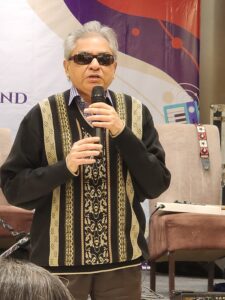
He was born Charles-Édouard Jeanneret-Gris on the 6th of October, 1887 in Switzerland; and spent most of his life in France. He was an architect, a designer, a painter, a writer, an urban planner, and a modernist to the core. He believed that drawing was preferable to talking as it had little place for lies. He was opposed vehemently by his peers for his revolutionary, nonconformist ideas (so many of his designs and ideas were rejected by people and authorities), but he stood by his beliefs and started several new trends in architecture.
He was one of the pioneers of modern International architecture- tall reinforced concrete structures, functional spaces devoid of any ornamentation.
He is better known as Le Corbusier, the designer of India’s first planned city, Chandigarh.
A nonconformist to the core
Initially Corbusier wanted to become a painter and joined an Arts school, where L’Eplattenier, whom he referred to as “My master”, and considered as his only teacher, encouraged him to study architecture also. Corbusier was a non-conformist to the core; experimenting with new ideas both in the fields of architecture and painting. He moved away from ‘cubism’, the art form prevalent at the time, terming it as irrational and romantic; and embraced “purism” instead. Here he changed his original name and became Le Corbusier, basically representing his belief that anyone could reinvent themselves.
Functional architecture
Corbusier’s ideas were no less revolutionary as far as architecture was concerned. He apprenticed under structural rationalist Auguste Perret, a pioneer of reinforced concrete construction. His apprenticeships under Perret and some other modernist architects shaped his ideas and his future career as he made following observations about architecture:
- The importance of the contrast between large collective spaces and individual compartmentalized spaces
- The classical proportion vs. Renaissance architecture (preferring Leonardo da Vinci’s golden rectangle proportion etc)
- The importance of geometric forms and the use of landscape as an architectural tool

He saw his buildings as ‘machines’ that should be functional and efficient, and not extravagant and ornamental. He proposed a new architecture that would satisfy the demands of industry, functionalism and geometrical forms providing the foundation for this kind of architecture.
His vision of a modern city
Once Corbusier expressed gross unhappiness over the state of affairs in the Stockholm city where he saw only a frightening chaos and saddening monotony. He wanted to clean up the town and replace it with a calm, powerful architecture, that is, steel, glass and reinforced concrete. The traditionalists were really happy of course, when nobody listened to his ideas. They were happy that the beautiful city was spared this modern blight.
However, Corbusier proposed elements that were adopted and considered by the designers later as part of modern architecture. His design had support pillars to raise the house above the ground, a roof terrace, an open floor plan, a façade free from any ornamentation, and horizontal windows in strips to allow maximum natural light. Similarly, his interior would feature the typical spatial contrast between open living space and cell-like bedrooms. His dream city would have clusters of skyscrapers accommodating the sea of humanity; green parks and gardens would feature at the feet of these tall structures. This was an idea that would actually define urban planning in the years to come.
Le Corbusier became a role model for many future architects, our own Charles Correa being one of them; but he had his detractors, too. Salvador Dali, though his friend, was happy when Corbusier passed away in 1965, saying that the world would now be free from the ugly concrete monsters.
Corbusier had a five decade long career, facing both success and failure with equanimity, he always stood by his ideas and principles. As we all know, he designed the city of Chandigarh and some breathtaking buildings in the city, like the assembly house building and the High Court building. We shall cover some of his best creations, including the villas designed by him, in our future posts.

Sources
www.biography.com/people/le-corbusier-9376609
https://en.wikipedia.org/wiki/Le_Corbusier
www.archdaily.com/278569/14-facts-le-corbusier
https://www.behance.net/gallery/25615603/Le-Corbusier-Biography-Tlrama-Specia
https://www.costume3pieces.com/talent/10/vincent-mahe
https://in.pinterest.com/pin/13468584508522692
https://cbamadrid.es/revistaminerva/articulo.php?id=43
ABOUT THE AUTHOR

Sandeep Singh is an architect from IIT Roorkee.
Ten years after graduating, he lost his vision to genetic Diabetes.
He reinvented his career and turned writer.
He has authored two fiction books and writes blogs on
Architecture, Outsourcing, Safety and a variety of other
subjects for different organizations. He also chairs and runs two NGOs
